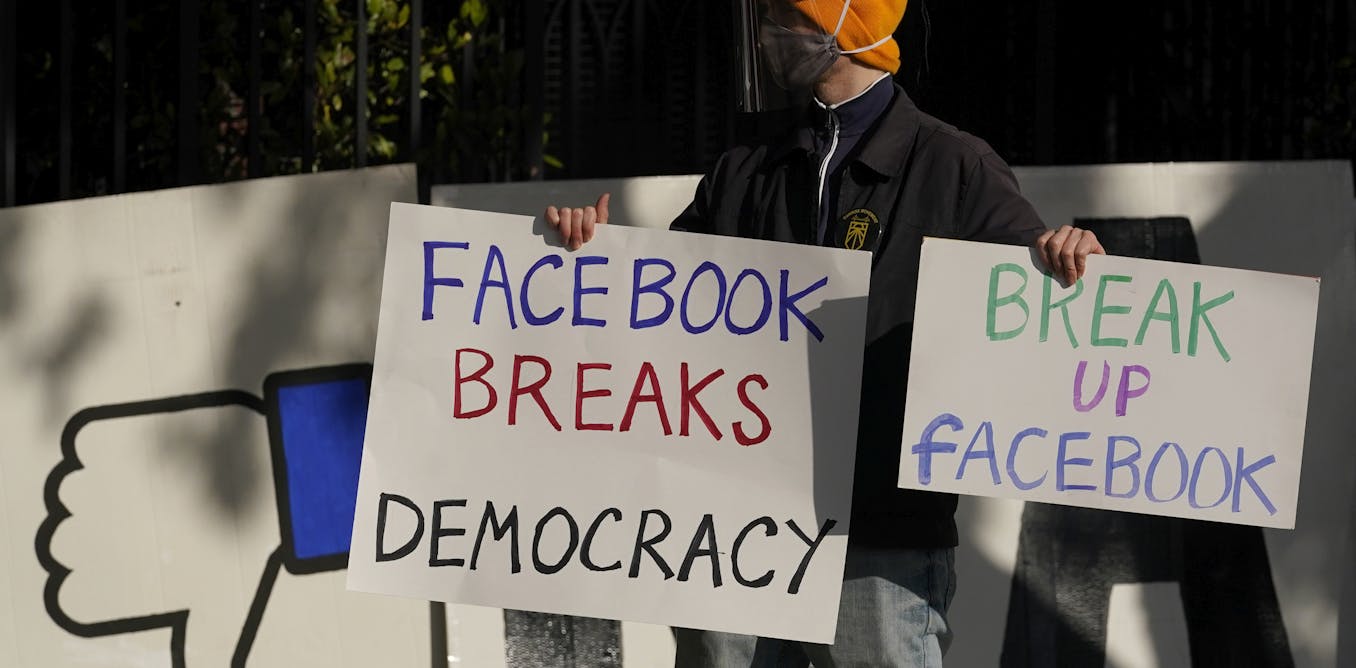The Billion-Dollar Problem in Education | Tanishia Lavette Williams | TED
In the TED talk titled “The Billion-Dollar Problem in Education,” education strategist Tanishia Lavette Williams sheds light on the expensive habit of standardized assessments that have become deeply ingrained in the education system. With a compelling narrative, Williams takes the audience on a journey through her experiences as a school and district leader, highlighting the detrimental effects of standardized testing on students and teachers alike.
Williams challenges the notion that standardized assessments improve teacher practice or build critical thinking skills in students. She argues that the focus on testing has led to a narrow curriculum that prioritizes memorization over true learning. By dissecting the racial and gender biases embedded in standardized tests, Williams makes a powerful case for moving away from a system that perpetuates inequality and instead prioritizing a more holistic approach to education.
With data visualizations and real-life examples, Williams makes a compelling argument for a strategic disinvestment in standardized testing as a form of accountability. She advocates for a shift towards personalized assessments that empower teachers to make informed pedagogical decisions and students to develop their unique gifts and skills.
Ultimately, Williams calls on policymakers, educators, and communities to come together to challenge the status quo and invest in a more human-centered approach to education. By prioritizing standards over standardization and promoting inclusivity and diversity in the curriculum, Williams envisions a future where every child has the opportunity to thrive and succeed.
Watch the video by TED
We have a very expensive habit of creating and administering standardized assessments. Do you remember taking tests in school? Yeah, yeah you do. Chances are, you may have been one of those people who said, “I’m going to stay up all night, I’m going to study. I’m going to read all these things.
And if I can just remember 25 more of these vocabulary words, the probability of my score goes up 2.3 percent.” Or maybe, maybe you were one of those ones who said, “If I just lay this book on my head, the words will automatically seep into my brain.” No matter either situation,
You knew that the outcome of those assessments would play a very important role in your future. So chances are, if you grew up in any of the 50 states in America, you participated in standardized assessments. In fact, depending on where you live, you may have started in third grade
And then tested every year until you graduated. Now, as a nation, even though we didn’t really embrace this notion of written assessments until around 1845, Dr. William Reese teaches us that this process, this notion of labeling and compartmentalizing children, started long before that, something like 150 years. And I did the math.
Think about it. We were testing and labeling children before we were a country. It’s a process that has always been embedded in our cycle of teaching and learning. It’s as American as apple pie. And that’s some expensive pie, because let me tell you, the standardized testing industry is a billion-dollar industry.
It’s used as a mechanism to define racialized achievement gaps, to dictate student promotion, to disseminate school resources and sometimes decide if it’s a “good” school or a “bad” school. Now, once upon a time, I was a school and district leader, and I did the back-of-the-envelope math.
And I’ve got to tell you, in my career, I’ve interfaced with, I’ve participated in something like 203,760 standardized assessments. And that’s a low-ball count. I was working, listen, I was working, and one thing I learned, one thing I learned from my teachers and from my students,
Is that my students actually learned more and performed better, and my teachers were actually much better pedagogues in times of non-testing as opposed to high-stakes testing. Right? So here’s the reality. Here’s some of what I faced. Have you ever seen a student collapse into tears because she could not remember the “Do-Nothing Presidents?”
Or what about the student who — this is what I’m saying, you’ve seen it? I’ve seen it, I seen’t ’em. Or have you ever interfaced with a student who literally broke into hives? And, I mean, we had to call in the nurse to put ice packs on this baby’s chest
Because he could not participate in that makeup exam because he had to go to college, and he needed that test score by that date. I’ve also had students who were more willing to punch each other in the face, to literally get into a fight,
Rather than to sit down and participate in a paper-pencil test. It ain’t right. Now people say that money is the root of all evil. But I’ve got to be honest, as an educator, I don’t think that standardized assessments are too far off. Audience: Mhm. TW: Mhm. Standardized assessments, as a form of accountability, do not improve teacher practice. They don’t build thinkers and creators in students. Now, what if I told you that the quality of education that we offer to students can be improved through a strategic disinvestment in standardized testing as a form of accountability?
Now, in one of my roles, I serve as the Education Stratification fellow at the Institute on Race, Power, and Political Economy. I know, you like my title, I like it too. Tell somebody. I study the construct of race. I look at rankings and status and distributions of power. I examine political economies. And all that’s really, really fancy. But what it really means is that I look at income and wealth as pertaining to education and its outcomes. So for the last 10 years or so,
I’ve worked in and researched New York City schools. Now, with the understanding that history class is the place where students most often come into contact with the world and its cultures, I thought, well, let’s start there. United States history and all of its accompanying exams. So in New York, like in most places,
There are standards that dictate all of the skills that we want students to acquire. There’s a curriculum that lays out the who, what, when, where, why, the people, the places, the things that we want to expose students to. And there’s an assessment that says: these are all the important things
That we’ve got to make sure these kids know by the end of the year. These three documents serve as the foundation upon which the US history curriculum has been curated in New York. Now this, this is a visual depiction of some of the imagery that our students see
When they participate in this class. And you may know some of these images because they were pulled directly from textbooks. We don’t have time to go through the entire curriculum in this format, so I’ve organized the data a little differently for you. This data visualization uses squares to represent males,
Circles to represent females, triangles to represent our non-binary and diamonds for everything that doesn’t fit in a gendered category. Now, in terms of color, we’ve used a spectrum of skin hues. We’ve also used our census denotation, so our white folks are represented by that lightest pigmentation.
And then when we get all the way to the other end, the richest, the most melanated, the darkest of the colors that’s associated with our Black and African Americans. This visualization shows you each and every topic that we want to expose students to over the course of the year, in chronological order.
So we’re going to dig a little deeper, and I want to zero in on the people. But the beat I want to take here is that it’s not just people that we randomly stumble across, it’s who they were, what their contribution was to the story of US history,
What their narrative is and how it fits with this history course. So these are the people that we actually study in this course, sorted by race and gender. Now we’ve got a good concept of what we teach in that class or what we expose students to.
We have a good concept of the people who surface in that class. Now I want to look at assessments and remember, assessments pull out the most important information that we want our students to know. So this visualization shows us the people who are of most importance on that multiple-choice exam in August 2023.
This is June 2023, this is January 2020, and this is 2019. So when we look at all of this data set together, and the significance of looking at all four years is that this is that last cohort. These are the students that we pushed out into the world.
And this is what we most wanted them to remember regarding US history. The people, the people whose narratives really told the tale. And I have a wondering, might some narratives be missing? Because I’ve got to be honest, there’s a distinguishable amount of white squares. So when we look into the curriculum,
When we dig a little deeper and we look at that in a bar graph format, we can see where some of that inequity actually begins. Can you see it now? So this is the part, this is the part that’s easy. You look at my data set, you can see that.
There are also parts that you can’t see as closely. These pieces that have become rituals of normalcy. They manifest themselves in pieces like racialized hierarchies of intelligence, like legislative wars over what students should and should not read, like millions of dollars in and out of curriculum companies
As they curate a story of the United States. Like wealth and income inequities amongst people of color. Now, an irony of these assessments, or the data that we glean from these students, is that it actually feeds more into a political economy than it does classroom instruction. It’s like the whole utility,
The whole function of those standardized assessments gets lost. Reason being, we are not forefronting building teacher capacity or deepening students’ knowledge in the process that we’re using. And we are spending billions of dollars to do that. Now I used to say, I used to say that the color of achievement,
We can look and we can associate it with hues classified by race. But maybe, maybe the color of achievement is green. Now, the way that we are currently rolling out these assessments results in an inadvertent focus on a very specific, a very laser-point focused point of view
That will not equip our students to be ever-evolving citizens in this crazy society that continues to change. We have created a memorization test where the most likely answer is the white male. So I said it at the onset, and I feel compelled to say it again:
I believe that the quality of education that we offer to children can be improved through a strategic disinvestment in leveraging standardized assessments as a form of accountability. What we’re doing right now does not build thinkers. We need tinker thinkers. What we’re doing right now does not build creators, and we need creators.
So imagine, imagine a world where all of the minutes of the instructional day are used in service of creating the people who are going to run society. The radical solution is an economic one. Shift the focus of assessments back into the classroom, where the teachers can use it to make pedagogical decisions,
And where the students can be informed about what they know and what they don’t know. So for my federal and my state policymakers, sample test. Understandably, you would love a mathematical equation that allows you to put every single decimal point on that spreadsheet, but I assure you, you do not have to test every single American child 112 times in their compulsory school years for you to decide that the school up the street needs more books. Sample test.
It’s easier, it’s cheaper, it’s faster, and it gives way more instructional hours back into the instructional day. For my local districts and my school boards, it’s OK to have standards. I have standards, but I need you to prioritize standards over standardization.
We do not need to test every single child the same exact way, particularly if that way does not bring out that child’s gifts or skills. Say it after me. Standards. Audience: Standards. TW: Over. Audience: Over. TW: Standardization. Audience: Standardization. It sounds like a button, right? I should get some buttons made.
I should get some buttons made. Now for my principals, oh, this is fun because I had this gig. Principals, you need to resource your teachers. There are a lot of things in the building that you cannot control, but one thing you can control is ensuring that your teachers, your staff,
Your crew have every single resource and skill that they need to do their job effectively and that they’re making good on that, that they are doing their jobs effectively. And know that every time you interact with a teacher, every time you build that teacher’s capacity
And give that teacher what he, she or they need, they are working with a child, and that child will go out to solve the problems of the world. Now for my teachers, you actually have a really fun job as well. You get to ask the questions that no one knows the answers to.
And here’s the thing, you can’t be wrong because nobody knows the answer, right? You get to pose unfathomable scenarios, all in pursuit of cultivating those thinkers of tomorrow. Because the problems, the questions for which we don’t have answers today become the catalyst to the solutions that we need for tomorrow.
I’m going to say it again. The questions that are unanswered today serve as the catalyst for the solutions that we need for tomorrow. That’s how we cultivate a growing society. That’s how we build thinker tinkers. The innovations that we need for tomorrow have yet to be conceived,
But they can start, my teachers, in your classroom, under your watch. Now for my students, my families, my community members and everybody else, I need you to hold folks accountable. One thing history teaches us is that we cannot sit back and wait for those empowered to make policy that is inclusive.
Policy changes, curriculum changes, people changes can come from the people and be for the people. And people work. People work, that’s good work. So let’s do some of that people work together. Divest in standardized assessments and invest in humanity. Thank you.
About TED
The TED Talks channel features the best talks and performances from the TED Conference, where the world’s leading thinkers and doers give the talk of their lives in 18 minutes (or less). Look for talks on Technology, Entertainment and Design — plus science, business, global issues, the arts and more. You’re welcome to link to or embed these videos, forward them to others and share these ideas with people you know.
Video “The Billion-Dollar Problem in Education | Tanishia Lavette Williams | TED” was uploaded on 03/07/2024 to Youtube Channel TED





































